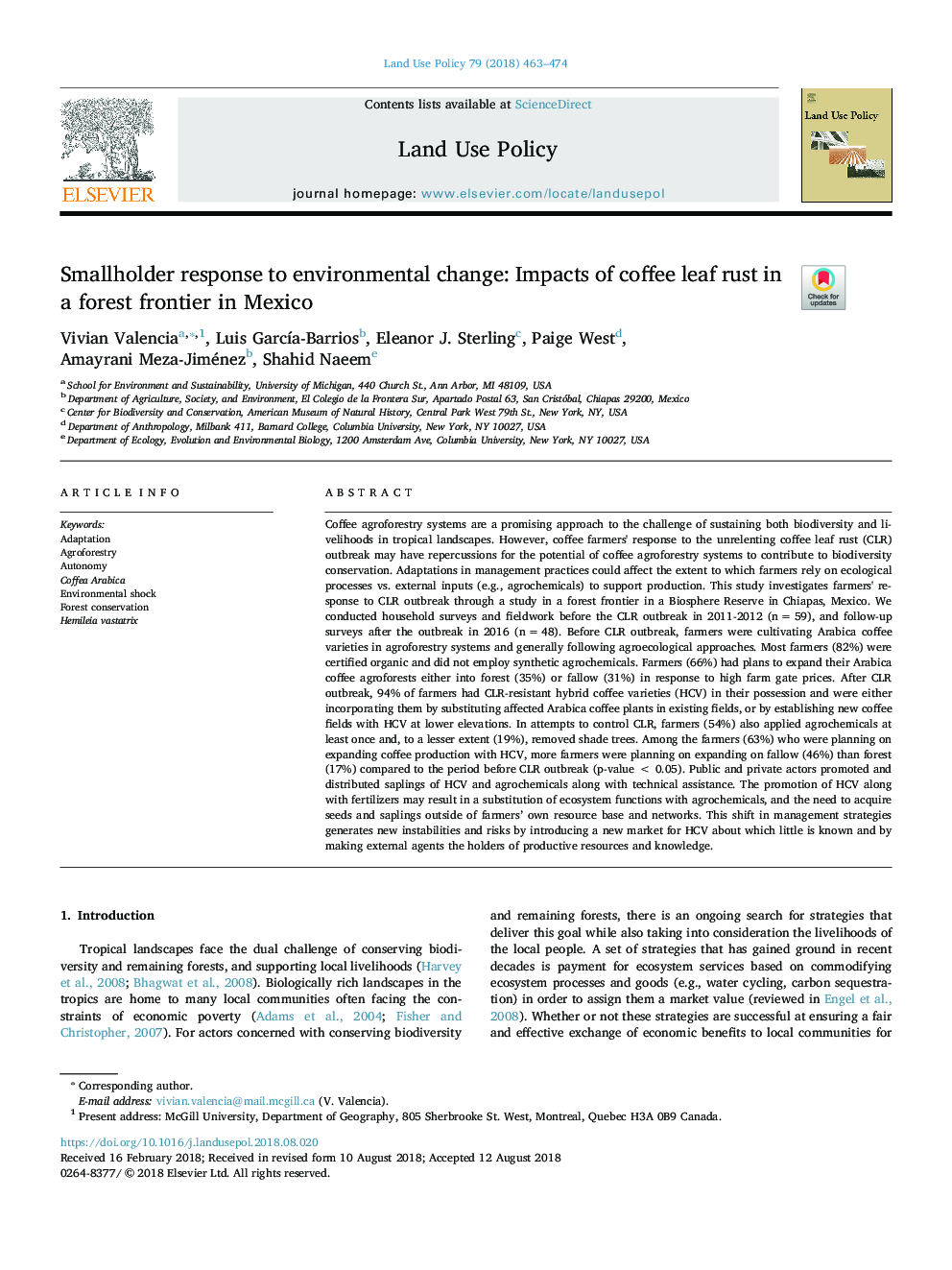| کد مقاله | کد نشریه | سال انتشار | مقاله انگلیسی | نسخه تمام متن |
|---|---|---|---|---|
| 11000086 | 1421804 | 2018 | 12 صفحه PDF | دانلود رایگان |
عنوان انگلیسی مقاله ISI
Smallholder response to environmental change: Impacts of coffee leaf rust in a forest frontier in Mexico
ترجمه فارسی عنوان
پاسخ کوچک به تغییرات زیست محیطی: تاثیر زنگ زدن قهوه در یک مرز جنگل در مکزیک
دانلود مقاله + سفارش ترجمه
دانلود مقاله ISI انگلیسی
رایگان برای ایرانیان
کلمات کلیدی
انطباق، جنگل زراعی، استقلال، کافایی عربی، شوک محیطی، حفاظت از جنگل، همیلیا پاسخرتری،
موضوعات مرتبط
علوم زیستی و بیوفناوری
علوم کشاورزی و بیولوژیک
جنگلداری
چکیده انگلیسی
Coffee agroforestry systems are a promising approach to the challenge of sustaining both biodiversity and livelihoods in tropical landscapes. However, coffee farmers' response to the unrelenting coffee leaf rust (CLR) outbreak may have repercussions for the potential of coffee agroforestry systems to contribute to biodiversity conservation. Adaptations in management practices could affect the extent to which farmers rely on ecological processes vs. external inputs (e.g., agrochemicals) to support production. This study investigates farmers' response to CLR outbreak through a study in a forest frontier in a Biosphere Reserve in Chiapas, Mexico. We conducted household surveys and fieldwork before the CLR outbreak in 2011-2012 (nâ¯=â¯59), and follow-up surveys after the outbreak in 2016 (nâ¯=â¯48). Before CLR outbreak, farmers were cultivating Arabica coffee varieties in agroforestry systems and generally following agroecological approaches. Most farmers (82%) were certified organic and did not employ synthetic agrochemicals. Farmers (66%) had plans to expand their Arabica coffee agroforests either into forest (35%) or fallow (31%) in response to high farm gate prices. After CLR outbreak, 94% of farmers had CLR-resistant hybrid coffee varieties (HCV) in their possession and were either incorporating them by substituting affected Arabica coffee plants in existing fields, or by establishing new coffee fields with HCV at lower elevations. In attempts to control CLR, farmers (54%) also applied agrochemicals at least once and, to a lesser extent (19%), removed shade trees. Among the farmers (63%) who were planning on expanding coffee production with HCV, more farmers were planning on expanding on fallow (46%) than forest (17%) compared to the period before CLR outbreak (p-valueâ¯<â¯0.05). Public and private actors promoted and distributed saplings of HCV and agrochemicals along with technical assistance. The promotion of HCV along with fertilizers may result in a substitution of ecosystem functions with agrochemicals, and the need to acquire seeds and saplings outside of farmers' own resource base and networks. This shift in management strategies generates new instabilities and risks by introducing a new market for HCV about which little is known and by making external agents the holders of productive resources and knowledge.
ناشر
Database: Elsevier - ScienceDirect (ساینس دایرکت)
Journal: Land Use Policy - Volume 79, December 2018, Pages 463-474
Journal: Land Use Policy - Volume 79, December 2018, Pages 463-474
نویسندگان
Vivian Valencia, Luis GarcÃa-Barrios, Eleanor J. Sterling, Paige West, Amayrani Meza-Jiménez, Shahid Naeem,
